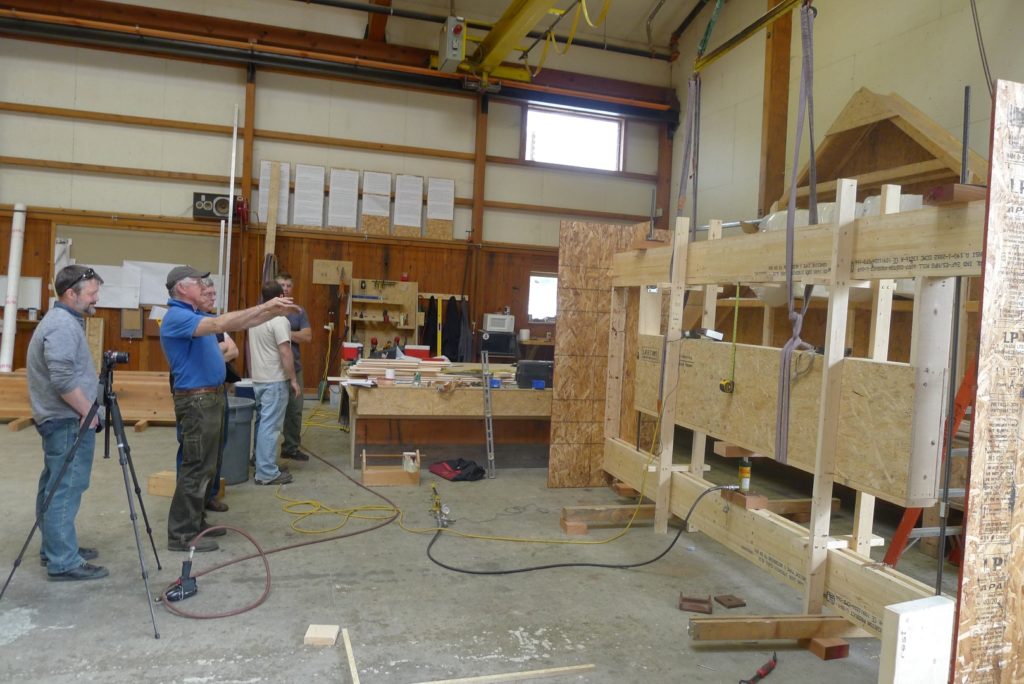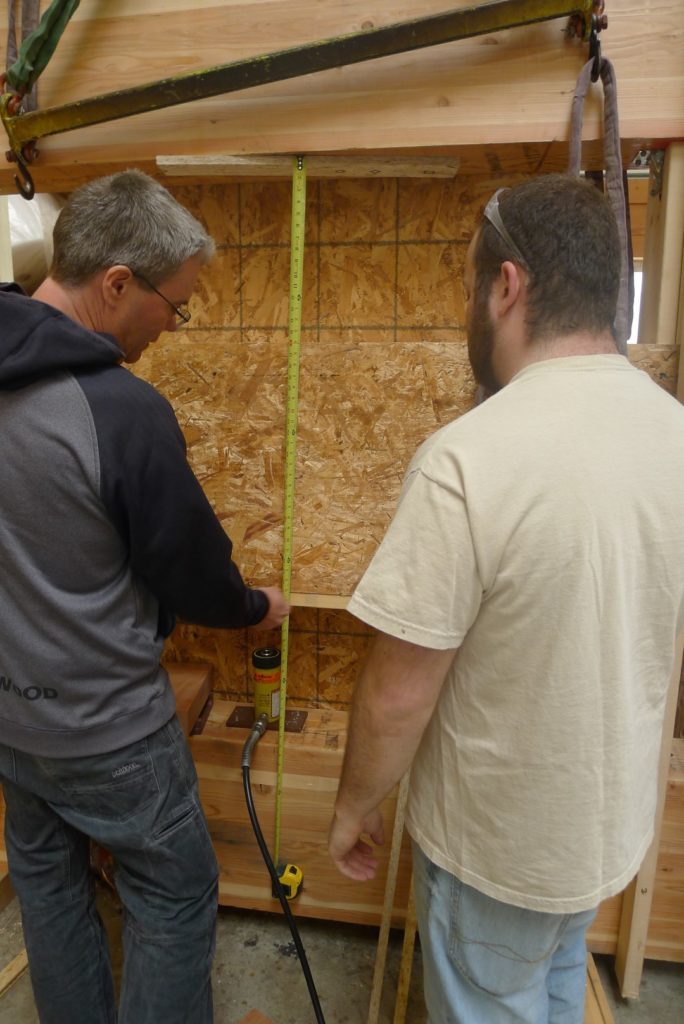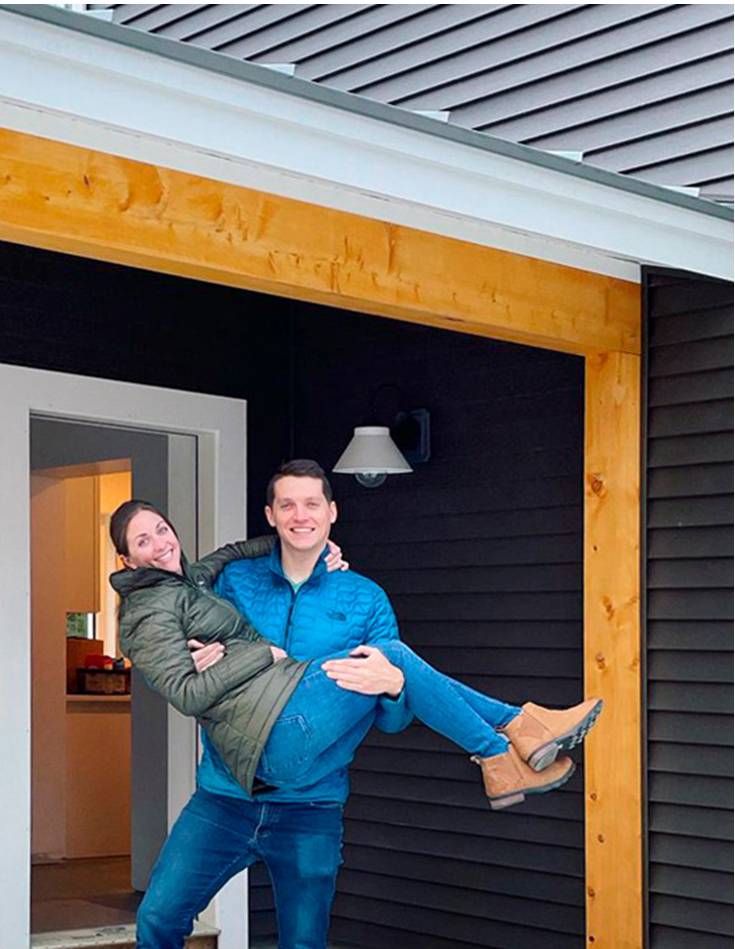Bensonwood’s former head engineer Ben Brungraber (aka “Dr. Joint”) enjoys breaking things. In fact, Ben’s alma mater Stanford awarded him a
As Unity continues to pursue lowering the cost of high performance homes, we are creating new building systems that are optimized both for our production system and for performance in our homes. This “design for manufacturing” approach is made possible by Unity’s off-site construction methods and our closely-knit team of engineers, architects and fabricators.
Recently our team has focused on finding better solutions for framing and insulating the wall area over windows and doors. Standard framing relies on solid headers and short studs to provide the necessary framing, but that wood compromises the energy performance of the wall. Our Building Systems team, working closely with our engineers, has designed a header that uses wall sheathing and minimal framing to create a hollow but rigid beam—a beam that can be dense-packed with cellulose for optimal insulation. The headers will allow walls to be built more rapidly in our shop, and will also provide advantages for assembly on site.In order to test the strength of this new header and to refine its design, Bensonwood engineer Taylor Buchalter worked with Ben to set up a testing apparatus. With the header held firmly in place inside a rigid framework, a hydraulic ram applies steadily-increasing pressure to the header. Eventually something gives—usually the header—and the force required to generate that failure is recorded. The strength of the header is then compared with the structural requirements for particular loads and spans.
Although this testing did not strictly follow the protocols of a standards testing agency such as the American Society of Testing and Materials (ASTM), it is still quite useful for our own purposes. The testing gives us a better understanding of the header designs so that we can safely deploy them within our total building system.
When the initial tests revealed that the prototype header design appeared to be more robust than needed for the loads encountered in a typical Unity Home, our Building Systems team built progressively simpler and lighter versions of the header for testing. In other words, the design of the header was optimized for the application, the materials used and the labor required. This optimization is typical of the approach we have taken with many elements of Unity Homes. As Unity’s founder Tedd Benson is fond of saying, the goal with Unity is “not to minimize or maximize, but to optimize.”








